In this ultimate guide we will talk about sneakers making. I will discuss with you how to make sneakers step by step. We’ll talk about every important detail that is involved in the process of sneakers making sneakers like materials to work with, special sneakers shoe soles and their alternatives, sneakers designing etc.
Sneakers Making: What You Need to Know
[Video Tutorial] Sneakers Making: Everything You Need to Know
Best thing to start from is from the beginning of the sneakers making process, from the shoe last. What shoe last type you can use to make your sneakers?
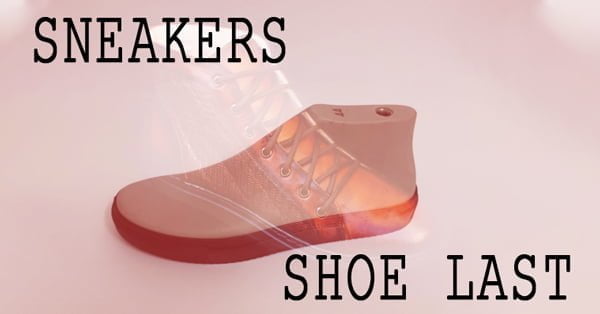
Part 1. Understanding Shoe Last for Sneakers: A Guide for Beginners
In this first part of this post I will explain:
- What type of shoe last you need to have to make high top sneakers, for example vans or basketball shoe type

Photo by Ronit Singh on Unsplash
What is your shoe last alternative to create different types of sneakers as running shoes, low top sneakers shoes, tennis shoes etc.

Photo by Joseph Barrientos on Unsplash
Shoe Last for Vans Sneakers: What You Need to Know
I already talked a lot with you about shoe last types. There are many different shoe last types and almost each footwear type has its own shoe last type. You can learn more about different shoe lasts types in this post “Shoe Last Types & What Is A Shoe Last! [Definitive Guide]”.
Now, the same thing is regarding a shoe last for Vans sneakers. There is spesial shoe last for vans sneakers making.
What is the Vans sneakers type last ?
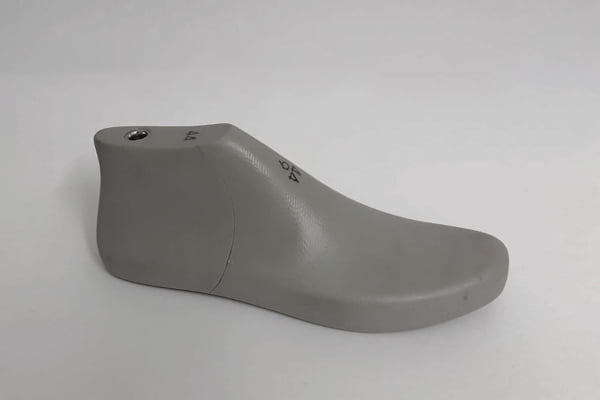
To compare shoe last for vans sneakers and some other shoe last type for example, shoe last for court footwear type, there is no extra room in the shape of shoe last for court footwear types.
So, in other words, you will not be able to use a sockliner from thick foam working with this shoe lasts because it will reduce the inner volume of your shoes and they will be small for you.
These two main differences :
extra room for the thick sockliners and sole with high walls to hide this volume

that vans sneakers have also defined the shape of the shoe last for vans sneakers.
Understanding Vans Sneakers Type Last: High Top vs Low Top
Top Shoemaking Courses To Learn Now
This is the first online platform that offered shoe making online, and since 2013 we offer top shoe making course here.
Here you will find starting courses for total beginners, special footwear making techniques courses and professional courses for shoemakers with expirence.
From Sneakers course and Men's focused footwear courses, to full shoe making programs.
Here is the top shoemaking courses and programs our students love.
And Vans sneakers with low top

Photo by Devon Divine on Unsplash
That’s why there is a special shoe last for vans with high top and shoe last for low top vans sneakers.
But don’t worry, you don’t need to have many different shoe last types to make sneakers.
Keep reading, and I will share with you how you can work with one shoe last type and make your sneakers.
Advantages and Disadvantages of Working with Shoe Last for Vans Sneakers
Vans shoe last gives extra comfort for sneakers by adding thick, soft sockliners
Vans shoe last requires a special shoe sole with high wall and it creates unique style that actually defines the style of vans sneakers
To work with shoe last for vans sneakers you have to use its unique sole (not obligatory but to have sneakers with goo look) and you need to source this sole together with shoe last
You should use sockliners with thick foam otherwise you will have sneakers too big for you
The vans sneakers sole made from polyurethane and it requires to work with special glue for polyurethane ( later in more advanced steps we will talk about types of glue)
Making Sneakers Using Any Shoe Last: A Step-by-Step Guide
Because it may be difficult to source shoe last for vans sneakers you don’t need to stick with these shoe last types. You can use different shoe last type to make sneakers.
To be more specific, you can use any shoe last for court footwear types and make sneakers or any other sport shoe type working with this shoe last type.
Shoe Last for Court Shoes: Understanding the Basics
It is actually a shoe last that you can use to make a court shoe- shoe with low top, like oxford shoes, derby shoes, pump shoes, moccasins ect.
Note: it doesn’t include sandals. For the sandals there is its own shoe last that you can use for the sandals making only.
So if you can’t find shoe last for vans sneakers making you can use any other shoe last, for example pump shoes, and make sneakers.
What is important is that this shoe last must be with a wide toe shape,like rounded or square toe shape, but not pointed,because it will not suit the sneakers design.

The shoe that you will make working with the court shoe last type will have a design of sneakers that do not obligate you to work with polyurethane vans sole and of course, without thick sockliner.
Next great thing about working with this shoe last type is that you can make sneakers not only with low tops but with high tops as well!
There is a special shoe making and pattern making approach that will allow you to make sneakers with high tops working with shoe last for low tops (court shoe).
In my Sneakers course I will teach you this pattern making approach, so you will not be limited in your sneakers making.
Now, to get started with sneakers making, as this is the first thing you must have, I made a shoemaking tutorial for you about shoe lasts for vans sneakers and their alternative .
Watch it and don’t be shy. Ask your questions in the comments below.
Special Sneakers Sole for Any Shoe Last: Options and Considerations
We all get used to sports shoes, sneakers that have some special rubber shoe sole, like vans polyurethane sole, or molded Nike sole, or any other rubber shoe sole.
So what can you do if you don’t have these shoe soles and want to make sneakers?
There is some ‘’special’’ material you can use for soles in the sneakers making.
I am talking about EVA foam material that is very light and flexible enough to make soles for sports shoes.
It comes in sheets and can be with different thickness and colors.
In my Sneakers course we will teach how to make EVA soles for your sneakers working with any shoe last (of course, any shoe last for the court shoes!)
I will talk more in detail about EVA shoe soles in the next parts of this post. So stay tuned!
In the meantime take a look at our sneakers where we made EVA shoe sole!
Part 2. Materials for the sneakers making
In the sneakers making you must use many different materials like leather for the sneakers upper and lining, foams, glue, thermoplastic materials, non woven chemical sheets, dye colors ect.
I decided to start this very important theme from the glue types you will need to work with in the entire process of sneakers making.
So let’s dive in.
Chapter 1. Types of Glue for Sneakers Making
In the creation of the sneakers you will need to use two types of the glue:
Neoprene glue and Glue for the Polyurethane .
Note: These two types of the glue that I will talk about have a notable smell, so it is very important to have a good ventilation in your work space.
Now, I will not specify the names of the brands, I will talk about types of the glue and their use in sneakers making. There are different brands and choose the one that you can source locally.
Neoprene glue is actually contact glue for leather (and many other different materials) and we use it not only in the sneakers making and in the creation of any other shoe type.
It is “yellow glue” (this is how shoemakers call this glue) that works well in the entire process of shoemaking. [Keep reading about uses of this glue,I will talk about it in a minute.]
Glue for the Polyurethane is a “white glue” that works well also in the entire process of shoemaking but because of its strong smell and approach of the activating it uses the most in footwear factories.
You will need to work with it only if you plan to make Vans sneakers with polyurethane shoe soles, otherwise you can work only with neoprene glue.
Remember, with the neoprene glue you can't attach polyurethane soles. You must use this ‘’white‘’ glue in the making of vans sneakers.
Where to Use Glue in the Sneakers Making Process
We use it almost from the beginning of the shoe making craft. Let’s talk about it shortly on the example of of the sneakers making process.
1. After you will cut all leather pieces of your sneakers you will move on to the assembling of all these parts
Here is the step where you will use glue ( neoprene glue). In order to assemble all leather parts of the sneakers you will need to place glue in the places that you need to attach.
In the middle of the assembling process you will attach foam to the tongue and to the quarters using glue.
So we assemble all sneakers details together by attaching them. That’s why in the next step of the sneakers making -sewing, it will be easy to sew all parts together.
2. In the process of the lasting you will use neoprene glue to attach the edges of the upper and lining to the insole
3. To flatten the shoe bottom of your sneakers you will need to ATTACH with the glue the piece of cork.
4. To attach the shoe sole of the vans sneakers or any other sneakers design, you will use glue as well. What is important here is to know which type of the glue (neoprene or glue for the polyuretan) you need to work with.
The main use of the glue for the polyurethane in the sneakers making is if you will use polyurethane shoe soles.
If you will use for the sneakers soles any other material, for example EVA foam, like we did in my Sneakers course, you can work only with neoprene glue in the entire process of sneakers making.
To make this eva sneakers sole easier, especially for beginners in shoemaking, we used a welt (ready made welt). So, the sneakers design will have slight touch of the elegancy.
The approach of working with these glues is different, so let’s learn how to work with them in the making of the sneakers.
How to Use Different Types of Glue in Sneakers Making
In the use of both types of these glues you will need :
- Place glue on both surfaces of the details that you want to attach
- Wait 10-15 minutes until the glue will dry
- Place second layer of the glue on both surfaces of the details
- Wait until glue will dry
Now here comes the difference between these types of glue.
- The glue for polyurethane you will need to activate with heating before you will start to attach pieces. You can use a heat gun to activate the surface of the polyurethane sole and the bottom of the sneakers.
- The neoprene glue you don’t need to activate in order to attach pieces.
- Attach details using hammer or some pressure
Now, in this tutorial I made for you learn more details about these two types of glue and their use in the sneakers making.
Part 3. Designing Sneakers
I think you will agree with me that we live in an era of Sneakers. The market is overwhelmed with thousands of sneakers' designs.
Literally each footwear brand produces sneakers, not to mention the pioneers in sneakers making technology like Nike , Adidas etc.
Photo by Sara Kurfeß on Unsplash
This is quite natural because we wear sneakers on a daily basis with almost any cloth style and probably each of us has at least 3 pairs of sneakers.
In spite of thousands of possible sneakers designs, there are few characteristics in designing sneakers that repeats in one way or another.
That’s great for us who want to make their own sneakers because by knowing these most common designing characteristics in the sneakers making, we can make unlimited designs of the sneakers.
This actually was my main goal in the creation of the Sneakers Course. I build it in the way where you will learn all these features in the designing sneakers to make whatever sneakers design you want.
With all that being said, let’s talk about it in detail.
Common Characteristics of Sneaker Designing
In general, there are 5 types of sneakers' designs and all possible variations in the designing sneakers subdivided into these 5 groups.
The first two types are sneakers that are constructed according to the construction of the Oxford shoes and can be with a high or low top.
If you want to know more about my Oxford shoes please check my
English Welted Brogue Oxford Men's Shoe Course
Oxford shoes are shoes with laces that have closed construction, meaning that quarters are sewn under or on top of the vamp and they stay firm during the opening and closing the laces.
So we have:
- “Oxford” sneakers with low top

Photo by Maksim Larin on Unsplash
“Oxford” sneakers with high top

Photo by whereslugo on Unsplash
The second 2 types of sneakers are sneakers that have a construction like Derby shoes.
If you intrested in Derby Shoes making please cehck my full shoemaking course: Bespoke Derby Hand-sewn Opanka Shoe Making Course
Derby shoes are shoes with laces that have opened construction where quarters also are sewn on the top of the vamp but unlike in the Oxford shoes, they move freely in order to open and to close the shoes.
“Derby” sneakers with low top

Photo by Clem Onojeghuo on Unsplash
“Derby” sneakers with high top

Photo by Paul Volkmer on Unsplash
All these 4 types of sneakers' styles have unlimited variations with some soft elements or without.
Soft element is actually the next one of the most common characteristics in designing sneakers.
Almost each sneaker type has the cushion element that can be in any place but in most of the sneakers' designs it is in the top of the sneakers or in the tongue.
Photo by Reinhart Julian on Unsplash
The good news is that if you will know how to design all these 4 types of sneakers including the soft elements that you can insert in any place in the designing sneakers, you will have absolute freedom in making your sneakers.
You will be able to design any sneakers type.
This is actually what you will learn in my Sneakers course. After taking this course you will be able to design any sneakers type.
Last, the fifth, sneakers type are sneakers that are made from some stretchy material and don’t have any fastening. This type of sneakers you can make only if you have some stretchy material.

Photo by Nathan Dumlao on Unsplash
How to Design Any Type of Sneaker: Tips and Techniques
As I mentioned previously, you can design any sneakers type if you know sneakers designing of all these 4 types and you can also add some soft elements.
It is true because once you know how to design some Oxford sneakers style, some Derby sneakers style, how to construct sneakers with a low top, high top and how to add cushion details, you will know how to mix them up and create your own sneakers style.
This is actually the same designing approach I talked about in this post “Shoe Designing 100% Working Approach [Make Any Shoes]” and if you want to learn more about it, check the post.
Let’s learn how it works on the example of my Sneakers course where you will learn how to construct Derby style sneakers with high top and how to design Oxford sneakers style with low top
So after you learn them you will know how to design any sneakers style.
Let’s learn the approach of sneakers designing more detailed.
“Derby” sneakers style with a high top.
When you will learn how to design these high top sneakers
From my New Sneakers Course
You can design sneakers like these sneakers styles:



“Oxford” sneakers style with low top
When you will learn the sneakers designing of this type

You can change this design and create sneakers styles like these 3 different styles

Mix them up by creating high top “Oxford” sneakers style and low top “Derby” sneakers style


All these styles of sneakers designing are only my examples of what you can do after learning 4 different sneakers types and I could place here thousands of other sneakers' designs.
This is the main thing that I want you to understand: You have no limits in your possibility of the sneakers designing after you will learn these 4 types.
You can make your sneakers with soft details or without, with vans soles or with EVA soles.
It is up to you.
Note: in my Sneakers course I teach how to work with foam to create soft elements, how to work with vans soles and how to make EVA soles to not be limited in your sneakers making, plus 4 sneakers types listed above.
Part 4. EVA Soles in Sneakers Making
If you don’t have vans shoe soles to use them in your sneakers making, you have another great option. You can make soles for your sneakers from EVA foam.
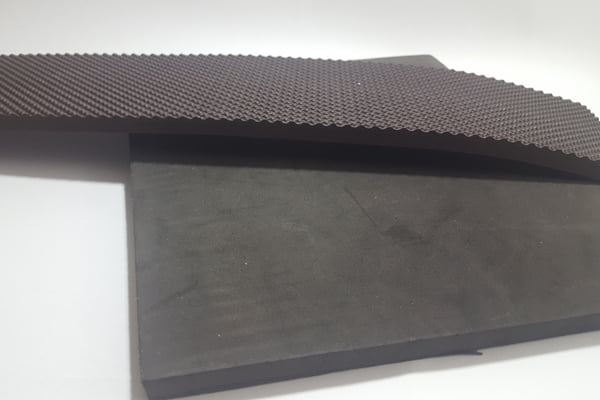
This is very light, stable and flexible enough material to make the soles of your sneakers from.
It comes in boards with different thicknesses and colors. You can choose the color and thickness that will suit the design of your sneakers.
The great thing about this material is that it is very easy to source and even if you can't find some specific color you can color it by yourself.
Learn how to do it in this short shoe making tutorial I prepared for you.
EVA Soles vs Sneakers Vans Soles: Understanding the Differences
- Unlike Vans Sneakers' soles with EVA soles you don’t need to have any special shoe last that will fit the soles of the vans.
Usually to make sneakers with vans soles you have to source shoe last together with the soles of the vans.

With EVA boards you can create soles with different shapes and you can mix different colors of EVA together to create some interesting sneakers design.

Photo by Danny Wage on Unsplash

This sneakers with EVA soles is what you gonna learn in my Sneakers course.
- To attach EVA soles you don’t need to have a glue for the polyurethane, you can use the neoprene glue
So if you will work with EVA boards in your sneakers making process, you will use the neoprene glue for the entire work.
How to Work with EVA Boards to Make Sneaker Soles
The process of the work with EVA boards is very easy.
You need to make the pattern of the sole for your sneakers and cut EVA boards using this pattern. Then attach this Eva sole to the sneakers, cut extra and sand it to have a smooth and nice surface.


In my new Sneakers Making Course we teach how to work with vans sneakers soles and how to work with EVA foam and make beautiful sneakers soles.
So if you don’t have the possibility to find sneakers and vans soles, you can use some court shoe last ( I already talked about it at the beginning of this post, make sure to check it) and make sneakers soles form EVA boards.
How to make patina is one of the most common questions that experienced shoemakers (and not only experienced) seek to know and it's quite understandable.
In the last years, patina became very popular in shoemaking and turned into art in itself.
It became craft independent from shoemaking and there are many many masters that do only patina. They don’t need to be real shoemakers that can do entire footwear and still can call themselves ‘’shoemakers’’ because patina got this privileged position in shoemaking.
If you are still not familiar with this craft I advise you to visit this “the shoe snob” website where you can find many amazing pictures of shoes with patina.
The truth is that it is a real art that requires a lot of knowledge and practice therefore, it is not in vain that it deserves such a privileged status.
Nevertheless, despite this fact, everyone can learn to do it if desired.
How to Make the Patina: A Basic Technique for Beginners
Although almost every great master of patina has his own approach to this craft, there is a very basic technique on how to make patina that you, as a beginner, can learn to start your journey in this craftsmanship.
That is why I decided to include this basic approach to patina in my new sneakers making course.
So let’s talk about a few primary things on how to make patina before you start to practice with it and there will be much more that you will discover on your own.
- Leather Options for Making Patina
The best leather type to use in making patina is a crust leather white color or with light beige shade.
- Choosing the Right Dye Colors for Patina
For deep penetration through leather use dye colors based on alcohol.
[In the market there are few brands you can work with]
You can choose some basic colors and mix them together to achieve different colors and shades. It works the same as in the painting where you can create, for example, purple color by mixing red and blue colors together.
Remember that working with the same dye color with different types and colors of leather you will get different patina results.
-How Many Layers Should You Apply for Making Patina?
Making patina can be a difficult task for those who don't have a passion because you should apply color layer by layer working with an almost dry brush. The amount of layers really depends on what result you want to achieve.
-The Most Basic Patina Technique for Sneaker Making
The basic patina technique is an approach where you create a gradual transition between dark and bright shades of the same color. Usually, along the edge of the sole and along seams of the upper there is a dark shade of the color that gradually becomes brighter.
-How Does the Basic Patina Technique Work in Sneaker Making?
To achieve this gradual transition between dark and bright shades you should place several layers of the color working with an almost dry brush. You will “push’’ the color working with a brush using small touching like movements.
So you should start to place color first in the places of footwear where you want to have dark shade. That means that in the dark places you will put more layers of the color than in the bright places.
I made a short tutorial on how to make patina with a gradual transition between different shades of the same color, so make sure to watch it!


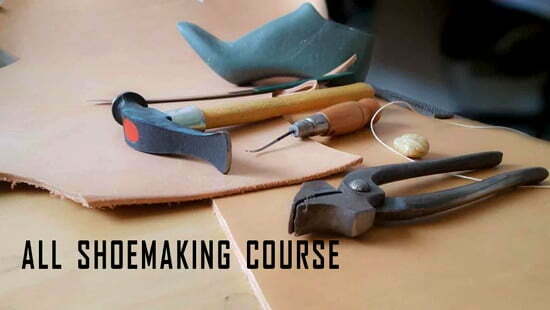
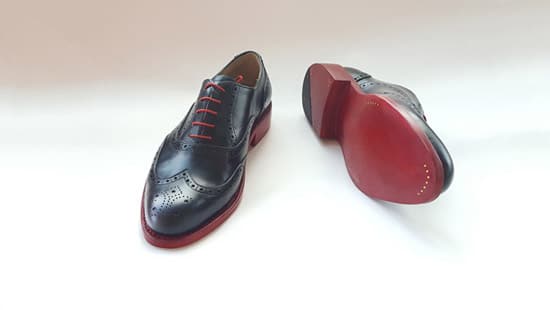
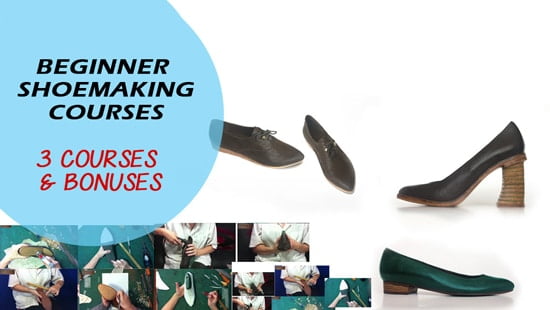
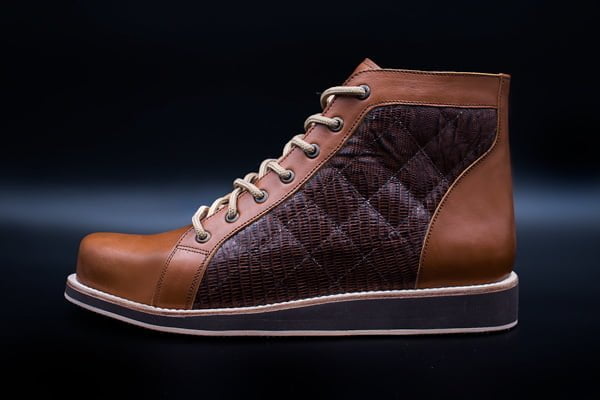


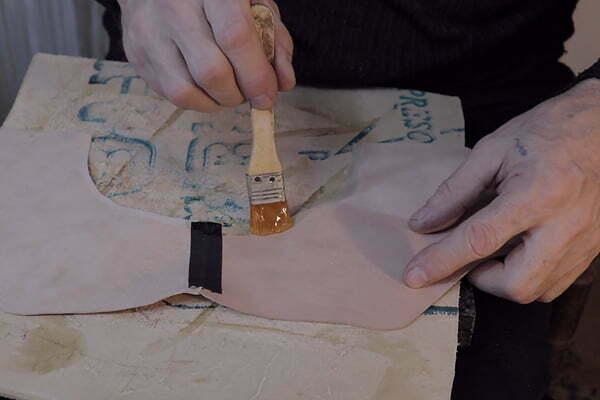
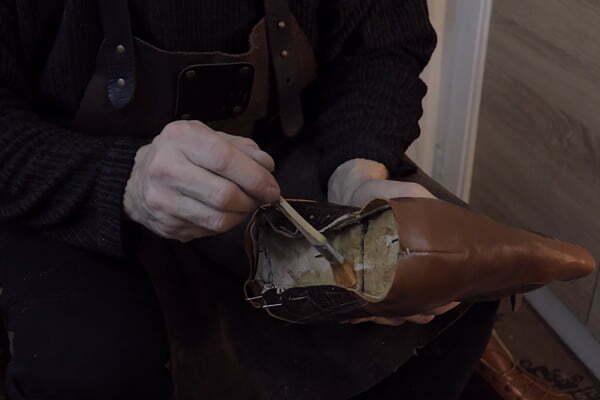









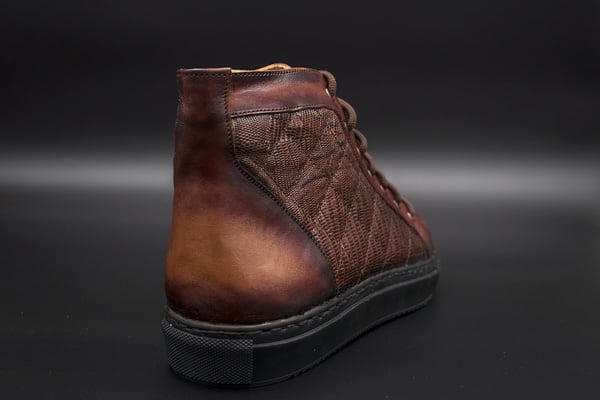


“I want to know more”
Dear Sveta, thanks for all your great information and resource links.
1) Do you put shoe shanks in sneakers?
2) Do you know of any suppliers of composite non-metal shanks that won’t set off airport security alarms?
Best regards,
Delmar
Delmar